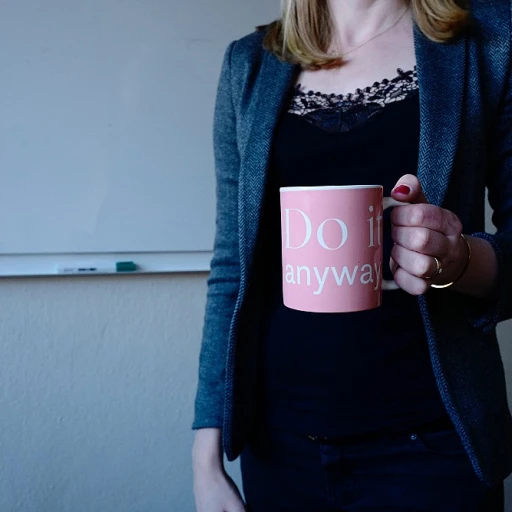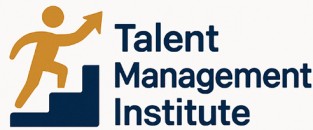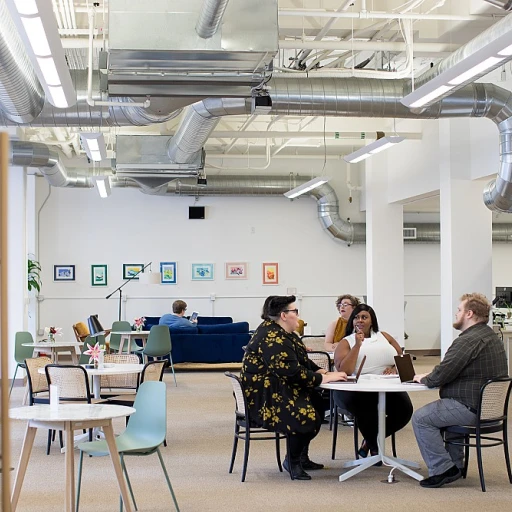
Understanding the Dynamics of a Cohesive Team
Fostering Strong Dynamics Among Team Members
Building a cohesive team involves creating a dynamic where all team members are unified towards common goals. It is important to recognize that each member brings unique skills and perspectives that contribute to the group’s overall success. The challenge lies in harnessing these differences to cultivate team cohesion. Effective communication and a culture of trust are fundamental for a cohesive environment. Members of cohesive groups need to feel comfortable expressing diverse viewpoints without fear of conflict or judgment. Clear, open communication enables team members to strategize, solve problems, and make informed decisions collaboratively. Patience and understanding are key in conflict resolution, which arises naturally when a diverse group works together. Addressing conflict constructively can lead to deeper trust among members, fostering a stronger team dynamic. Team building activities and consistent team development initiatives play an essential role in reinforcing these dynamics. These practices should focus not just on strengthening interpersonal relationships but also on aligning behaviors and values across the team. Understanding the importance of group cohesion and the dynamics that drive a unified team can pave the way for improved performance and more effective organizational growth. Exploring the dynamics of different job roles in team environments can also provide valuable insights.Identifying and Nurturing Talent
Spotting Capabilities that Ignite Impact
Successfully identifying and nurturing talent within teams is pivotal in crafting a cohesive group capable of high performance. Recognizing the unique strengths and skills that individual team members bring to the table not only bolsters team cohesion but also empowers a culture of mutual trust and respect.
As teams evolve, understanding the dynamics of group cohesion requires a keen eye for recognizing complementary capabilities among team members. It is essential for leaders and team developers to proactively look for talents that can enhance team dynamics and drive success. Encouraging open communication among team members helps in identifying these unique abilities.
Once exceptional capabilities are spotted, nurturing these talents involves consistent encouragement and giving team members the opportunity to further develop their skills. This can be accomplished through tailored training programs, mentoring, and providing opportunities to lead on specific projects or initiatives, fostering a supportive environment where employees feel valued.
Patrick Lencioni’s work on team dysfunctions suggests that successfully navigating conflict and encouraging open communication amongst members group can lead to enhanced trust and effective decision making. This enhances not just individual skill sets, but also the cohesive strength of the team.
Ultimately, understanding what drives each member and providing opportunities for growth ensures that talents are not just recognized but effectively utilized. By nurturing these talents, a company can cultivate an empowered and cohesive team culture, optimizing overall team performance. To navigate these complexities in talent management, consider exploring strategic insights on navigating talent structures.
The Role of Leadership in Team Cohesion
Leadership’s Crucial Influence on Team Cohesion
The backbone of any cohesive team is robust, influential leadership. When leaders effectively foster a culture of trust, open communication, and mutual respect, the entire group benefits. Leaders must understand the intricate dynamics between team members, ensuring that each individual feels valued and integral to the team’s success. Leadership's role extends beyond merely directing work; it involves nurturing an environment that encourages growth, creativity, and collaborative spirit amongst employees. Effective leaders manage to bridge gaps in communication, smoothing the edges when conflicts arise amongst team members. Proper conflict resolution strategies, inspired by experts in team dynamics like Patrick Lencioni, can greatly enhance group cohesion. Such strategies help in mitigating disruptive behaviors and fostering peaceful yet productive interactions within teams. To build cohesion, leaders should emphasize team building activities that align with the team’s goals and individual members' strengths. By promoting development and allowing team members to participate in decision making processes actively, leaders can build strong teams where everyone feels their opinions and contributions matter. Moreover, leadership has a significant role in modeling the behaviors cohesive teams should follow. By demonstrating cooperation, respect, and a commitment to shared objectives, leaders set a standard for communication and collaboration within the group. An effective leader will champion a transparent decision-making process, thereby reinforcing the group’s trust in each other and in the leadership’s credibility. The success of team cohesion is not just about team-building exercises, but also a testament to how leadership can forge a strong, unified team. Leaders are instrumental in nurturing a culture of shared values and high performance. To learn more about enhancing organizational performance through effective leadership in talent management, explore this detailed resource which dives deeper into the practices and strategies of successful leadership.Overcoming Challenges to Team Unity
Strategies to Maintain Team Unity
Creating a cohesive team extends beyond building activities and requires a deep understanding of human behaviors and communication. Even the most strong team can face hurdles that disrupt group cohesion. Highlighted below are some challenges and strategies to overcome them:
- Conflict Resolution: Disagreements are natural in any group of team members, yet unresolved conflict can erode trust and hinder performance. Encouraging open communication allows members to express their viewpoints and work towards finding mutually beneficial solutions. Techniques such as facilitating workshops on effective communication and conflict management workshops can be invaluable.
- Diverse Team Dynamics: Diverse teams can bring about creative solutions but may face challenges in harmonizing different perspectives. Leaders should promote a culture that values inclusivity and encourages every team member to contribute their unique insights. Celebrating diverse achievements can strengthen group cohesion.
- Establishing a Strong Team Culture: A clearly defined team culture can guide members in decision-making and behaviors. Leaders must articulate the values and goals that the cohesive group stands for and consistently reinforce these through actions and announcements.
- Leadership Development: Leaders play a critical role in maintaining cohesion. Investing in leadership development ensures they possess the skills necessary to unify teams and navigate complexities. Programs focused on emotional intelligence and team dynamics can significantly enhance their capacity to lead.
By consistently aligning efforts with these strategies, employees and leaders will find it easier to build a cohesive team that remains productive and harmonious over time. Regular assessment of the team's development and adaptation to its evolving needs will further cement unity and trust among members.
Tools and Techniques for Enhancing Team Collaboration
Effective Tools for Team Collaboration
Building a cohesive team involves more than just gathering a group of individuals; it requires strategic use of tools and techniques to enhance team collaboration. Success in this area hinges on fostering communication, creating a culture of trust, and promoting development opportunities.- Communication Platforms: Streamlined communication tools are essential for a cohesive team. Platforms like Slack or Microsoft Teams facilitate real-time communication, ensuring that all team members stay connected and informed.
- Team Building Activities: Engaging in regular team building activities can strengthen trust and improve communication among team members. These activities should be tailored to the unique dynamics of the group, focusing on fostering collaboration and understanding.
- Conflict Resolution Techniques: Every team encounters conflicts. Implementing effective conflict resolution techniques is crucial. Team members should feel comfortable expressing concerns, knowing that there are structured methods in place for resolving disputes effectively and amicably.
- Project Management Tools: Tools such as Trello or Asana help keep projects on track by organizing tasks and deadlines. These platforms support transparency and accountability, which are key components of a successful and cohesive team.
- Feedback Systems: Creating an open feedback culture encourages continuous improvement and development. Regular feedback sessions help in understanding team dynamics and identifying areas for growth, ensuring that cohesion is maintained across the team.













